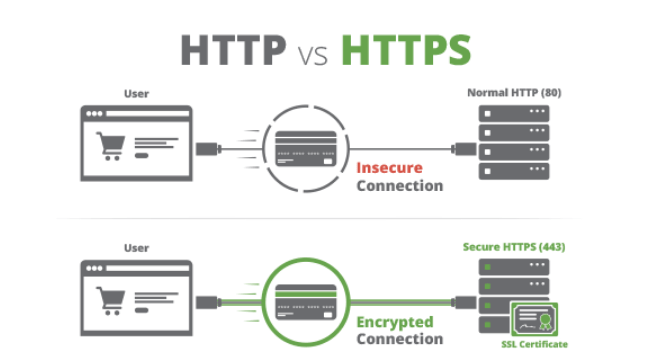Trust is an essential component connected with the security, reliability, and design of your website. The more useful these features are, the greater the trust in your website. The peculiar thing is, like in life, just one minor but dangerous incident that jeopardizes and causes havoc to your website can domino into wrecking your customer’s entire computer system. That underscores the importance of building a trustworthy website.
Why Building Trust is Important
Small businesses or start-ups embarking on a business venture have the challenges of becoming a known and trusted brand. Ecommerce is a crucial channel, especially for online businesses.
To build a trusted brand, you need trustworthy websites. Security and trust are valuable commodities, as they can make or break your business. Similarly, an excellent website design, reliable web services, and greater visibility on the internet will build trust in your website.
There are various tools and measures for building trust on your website. Here are five practical ways to build trust and attract visitors to your website.
5 Ways You Can Increase Trust on Your Website
1. Make Sure You Secure with SSL
The internet is based on technology, which means taking technical steps to protect the streaming of information from your website server to visitors’ browsers and vice versa.
The two technical indicators that a website is safe are the lock icon and websites beginning with HTTPS. Those are the things your visitors will look out for. Antivirus software will flag out the same warning to potential customers to either ‘KEEP AWAY’ or a welcoming green.
So, what actions can you take? First, to ensure your website’s security, install a Secure Sockets Layer (SSL) certificate.

Information flows from the website browser used by the visitor to the web server. Sensitive information, including customers’ credit card information, is within the grasp of just anybody. Without SSL, this information is exposed to the world and can be hijacked.
Visitors will be assured of a safer network connection with SSL. Hackers cannot eavesdrop or copy sensitive information from your website or computer. With the SSL, your domain name such as “joesgoods.com” begins with HTTPS, meaning it uses a secure connection.
The lock icon above shows that the website is protected and is an HTTPS website. To get yours, check with your website hosting provider on the options available for SSL. It could be free, or you can opt for a paid version.
Most websites are hosted by third-party providers. Aside from SSL, make sure you do your homework and review the security arrangements with them. Everything counts, from your choice of hosting provider to technical details like the difference between web servers such as Apache and Nginx.
2. Increase Website Reliability
The reliability of your website has a bearing on building trust. A website that is continuously down or sluggish is not acceptable in a fast-paced consumer society. Downtime is the length of time your site is unavailable for business.
Your website exists to sell products and offer services 24/7. Every second the website is down, it results in a loss of revenue. Even with a 99% uptime guarantee, there is a loss of 7 hours and 12 minutes per month.
To put it in a cost perspective, a 63-minute downtime on Amazon’s Prime Day cost the company $99,166,667 in estimated lost sales. It builds a poor reputation, affecting trust issues with your site, products, and business. The reduced trust leads to a reduced search for your website.
There are free and paid tools to track website uptime. It is an excellent option to monitor as, although most web hosting providers guarantee a 99.99% uptime, there can be unexpected situations such as hardware, network issues, and maintenance that lead to downtime.
Check out free website monitoring services such as Uptime Robot and Freshworks. These enable you to monitor your website continuously.
3. Look Towards Your Web Design
Your website design speaks volumes, so pay attention to designing a website that builds trust. First, determine who, when, and why you want to increase your visitor count. From there, progress to the ‘how.’
At this stage, you must have the three ‘who,’ ‘why,’ and ‘when’ planned. The ‘how’ incorporates the trust features that attract your potential target group.
Professional, User Friendly
The design, language, audio-visuals, and links have to treat customers with respect. Put yourself in your customers’ shoes. A little empathy goes a long way. Performance is essential, so use simple techniques that can stream faster through the network. Senior citizens like it simple, non-wordy, and straight to the point. Same for teens, except increase the oomph level without affecting speed.
Nobody likes a dead horse; the same goes for websites. Keep it alive, friendly, up-to-date, and welcoming.
Put a Picture (preferably yours) on Your Website
Do not remain anonymous. Put a picture of you and your team on the website. Seeing a face induces a sense of familiarity, assurance that this is a territory where a visitor is genuinely welcomed.
There can be a separate profile page where you talk more about yourself and how you came to start your business, your experiences, plus how it will benefit the customer. Pictures of your team members and their credentials, especially for services, build an image of a genuine and professional setup. You can present that information in the form of an attractive infographic.
4. Show Your Credentials
Create an image of a successful brand. Showing your achievements, and industry recognition through awards, letters, and recommendations gives the impression that you practice high standards and are among the many. Show off your partners. Trust by association happens everywhere, in the virtual and non-virtual media.
The number of positive reviews is a good trust builder. Many positive reviews from purchasers and industry and product reviewers reinforce the product’s quality. The websites gain trust with increasing visitors.
Reinforcing that image of success continuously in customers’ minds leads to the reinforcement of a belief that your brand and website can be trusted. The ‘my credit card is safe with you’ feeling is built into customers’ consciousness.
5. Leverage the Power of Social Media
Social media is a component of Web 2.0 web technologies. Web 2.0 is an integration of web services that enable user-generated content and support social interaction such as social network participation, content rating, and tagging. Social media has expanded business content communications through content creation, discovery, and sharing of information.
Social media conversations that have the power to go viral can influence product sales. Harness the power of social media. The social media field has many channels, including Twitter, Instagram, Facebook, and new ones such as TikTok. Engage your customers to link their feedback on your website to their social media accounts.
Various social media tools are available to manage social media activities; planning, scheduling, publishing, and analysis. These include SocialPilot, HootSuite, MavSocial, BuzzSumo, and SproutSocial.
These tools are useful for getting familiarized with social media, especially for new beginners. They are uncomplicated and easy to build your onsite reputation and connect with potential customers.
Keep the conversations going with potential customers. Remember, conversations can be viewed by tons of netizens who are potential customers.
Make Use of Social Influencers
Social influencers take on an essential role in influencing purchase decisions. They possess in-depth knowledge and experience with a product or service. Engaging actively within community websites, they steer the conversation while providing guidance and recommendations.
Social influencers as social ambassadors provide the best testimonies on the quality and performance of your products. Their influence can build customer trust in your website. The trust influence of prominent social influencers is contagious.
Engage with and build relationships with noted established customers who have the potential to be social influencers. Those possessing celebrity statuses will be more influential.
Conclusion
Building trust is vital in gaining customers within the virtual world. As the slightest misdemeanor leads to a domino effect, a very thin trust line exists, leading to diminishing visitors. A combination of technical, marketing, and e-commerce strategies is required for building trust.
Get a reliable web host provider who can host your website on secure and dedicated web servers using the latest cybersecurity software. Secure your website with SSL certification. This is the front-end assurance sign for visitors that your site is certified safe.
The website design has to induce customer trust that will lead to repeat customers. Social media is a powerful aid in maintaining the reputation of your website. Use the correct social media tools to harness its benefits. Build trust by building an excellent reputation, assisted by social influencers.


